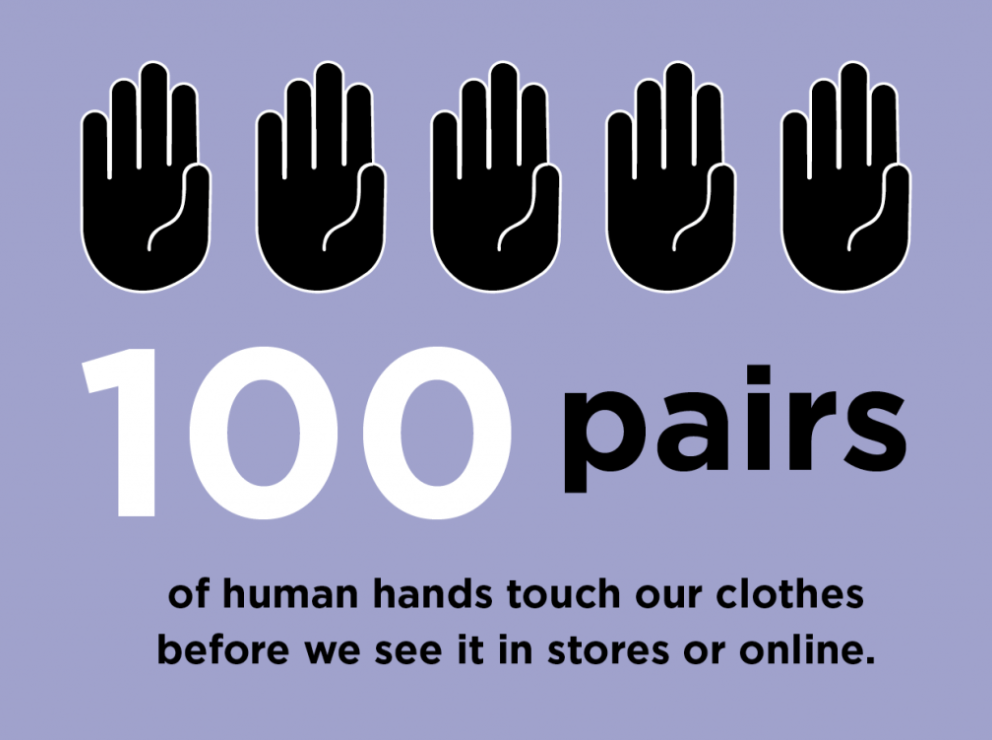The True Cost:
A Documentary to Spark a Change in the Fashion Industry:
Catastrophes shine a light on the bad of the world, but it creates a spotlight for good people to see more clearly
Over time, the fashion industry has grown and evolved, using new tactics to stay successful and allow people to get their clothing products in a cheap and fast way. Although this has produced great results for consumers, it has negatively altered the lives of the people who actually spend their lives making our clothes.
Recently in my fashion class, Apparel Product Development, we were given an assignment to watch the documentary, The True Cost. After simply sitting down for two hours to watch this movie, my entire perspective on the fashion industry has changed, and yours can too. Through interviewing professionals and going inside the overseas factories which create our clothing, the film team depicted the part of the garment industry that businesses are too afraid to show.
Picture Creds: https://truecostmovie.com/
Picture Creds: https://www.purposeup.com/true-cost-fast-fashion-darkside/
The narrator went in depth to talk about some catastrophes that occurred as a result of the fashion industry, such as the 2013 Dhaka garment factory collapse, also called the Rana Plaza collapse. I was surprised that I had never heard of it before, considering how immense and heartbreaking it was. Many factory workers were killed and injured because their bosses never listened to warnings about the cracks in the walls and signs that the building was unsafe. This ignorance led to its collapse, which is now known as the “deadliest disaster in the history of the garment industry”. When horrible events like this occur, people mourn and reflect on what caused it to happen, but they also advocate for change. Although no one wishes for horrible things to happen, there is always a positive. Catastrophes shine a light on the bad of the world, but it creates a spotlight for good people to see more clearly, so that those who are in these unfortunate situations can get some help.
Unfortunately, the power players of the garment industry don’t seem to place a lot of value on the life of their employees. In interviews, fashion directors and industry leaders displayed very little regret for their lack of attention to the conditions of their workers. Executives seemed to think that they were doing a great service for their employees, because there are many worse jobs that could be working. Because the garment industry isn’t “traditionally dangerous” they thought the workers should be more grateful, but whether it is meant to be dangerous or not, it has still been the cause of a major loss of lives.
Picture Creds: https://ourgoodbrands.com/real-impact-fast-fashion-industry-world/
Although these people can’t understand the hardships their employees go through, everyone deserves to work a good job where they don’t have to be afraid something horrible will happen to them. The people who work in these factories make less than a dollar and hour, simply trying to support their families and make a better life for themselves. It is unfair for such an economically powerful and influential industry to take advantage of these people who don’t have any better options.
I’m extremely grateful that my professor decided to assign this documentary to my class. It opened my eyes, and I’m sure it also opened the eyes of many of my classmates. That is why I decided to write about this topic, so that I can help spread the message that this documentary found important enough to share. We should all do our part to make factory workers’ lives safer, and have their stories heard so that they don’t have to go through the same thing as the Rana Plaza workers. I hope that all of you can think about what it truly means when the tag on your clothing reads “Made in China” or “Made in India” and who exactly sacrificed their wellbeing for the fast fashion that is so desired today.
Official Trailer: The True Cost
Full Documentary: The True Cost








